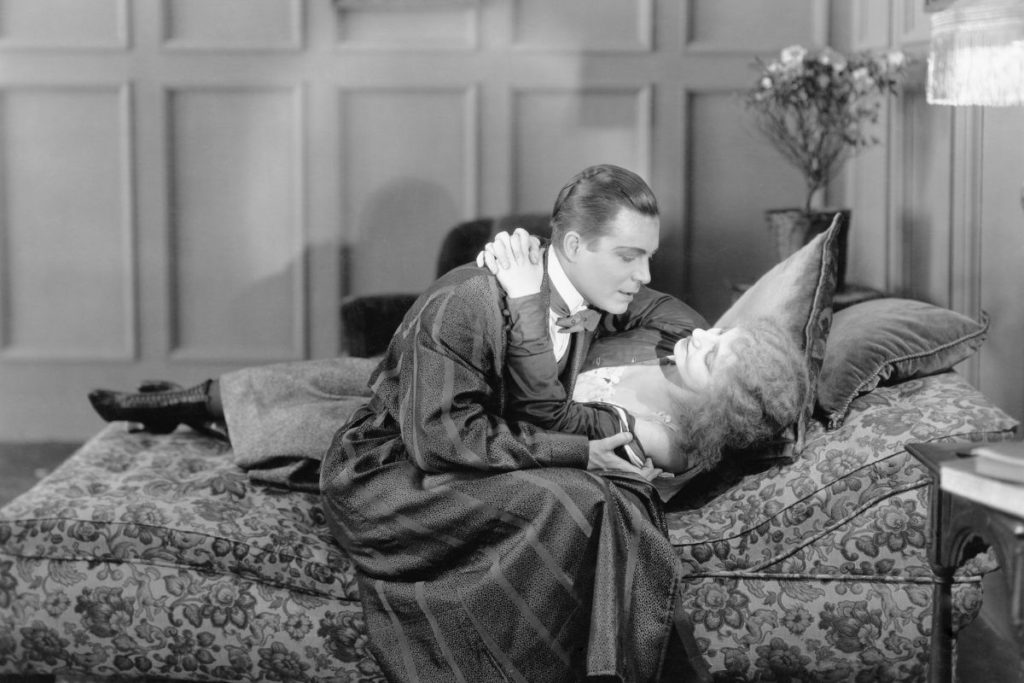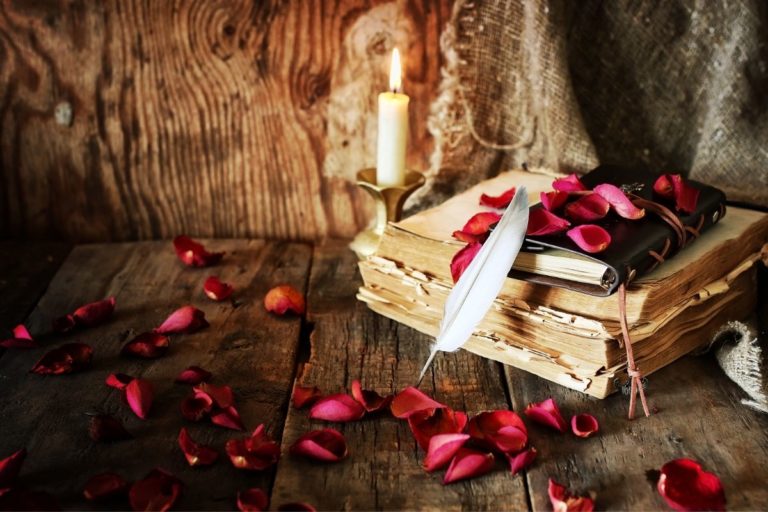
Whether you’re looking for a historical fiction summer read, or are interested in a compelling novel, here are the best historical romance books of all time
Even in the era of hookup culture and dating apps, a well-told love story never fails to satisfy readers’ unquenchable thirst for romance.
Soothing balm for heartbroken romantics or spicy zest for hopeful serial daters, there’s no better therapy than romance books. Except, maybe, historical romance books.
A romantically remote past enhances the escaping dimensions of a love tale. It makes our heroes’ quest for true love all the more enthralling, their longing for forbidden relationships more tragic. Temptation stronger, and surrender sweeter.
You might also like:
- 12 great books like “A Court of Thorns and Roses”
- 10 Books Like Red White and Royal Blue to Read in 2022
Disclosure: Some of our articles contain affiliate links (as an Amazon affiliate I earn from qualifying purchases).

The Clan of the Cave Bear: Earth’s Children Series
by Jean M. Auel, 2002
Prices pulled from the Amazon Product Advertising API on:
Product prices and availability are accurate as of the date/time indicated and are subject to change. Any price and availability information displayed on [relevant Amazon Site(s), as applicable] at the time of purchase will apply to the purchase of this product.
Set about 30000 years ago, during the Late Stone Age era, the Earth’s Children saga tells the life of Ayla, a Cro-Magnons young girl who is adopted and raised by a Neanderthals tribe.
The romantic twist takes place in the second book of the series, The Valley of Horses, when Ayla, exiled by her adoptive family, meets handsome Jondalar.
Along with steamy scenes that makes the romance intriguing and passionate, the story is remarkable for its accurately researched Palaeolithic botanical, archaeological and anthropological findings.
The Song of Achilles: A Novel
by Madeline Miller, 2012
Prices pulled from the Amazon Product Advertising API on:
Product prices and availability are accurate as of the date/time indicated and are subject to change. Any price and availability information displayed on [relevant Amazon Site(s), as applicable] at the time of purchase will apply to the purchase of this product.
The Iliad, no less. But the immortal siege of Troy, its intricate story of jealous goddess and bloody battles, is for once being told from an original point of view, the enamored eyes of lesser hero Patroclus.
While staying true to Homer legendary masterpiece – the author is a classics scholar after all – the novel revolves around the untold side of the epic war, the heart-wrenching love story between demigod Achilles and vulnerable Patroclus, masterfully unfolded through a lyrical, evocative prose.
The Lady and the Unicorn: A Novel
by Tracy Chevalier, 2003
Prices pulled from the Amazon Product Advertising API on:
Product prices and availability are accurate as of the date/time indicated and are subject to change. Any price and availability information displayed on [relevant Amazon Site(s), as applicable] at the time of purchase will apply to the purchase of this product.
Acclaimed author Tracy Chevalier draws inspiration once again from an iconic artwork, a late medieval series of tapestries exposed at Paris Cluny Museum that depicts the seduction of a unicorn by a fair lady.
The fictional re-enactment of the tapestries’ creation, occurred between 1490 and 1492 in Paris and Brussel, develops on different levels: the obsession of the renowned painter Nicolas des Innocents for Claude, the young daughter of his patron; the convoluted relationships between Jean Le Viste, who commissioned the artwork, and his wife Geneviève, who will eventually be portraited; the precise description of the art of tapestry-making at George de la Chapelle workshop.
Pride and Prejudice
by Jane Austen, 1813
Prices pulled from the Amazon Product Advertising API on:
Product prices and availability are accurate as of the date/time indicated and are subject to change. Any price and availability information displayed on [relevant Amazon Site(s), as applicable] at the time of purchase will apply to the purchase of this product.
A list of the best historical romances couldn’t exclude Jane Austen most loved classic, anointed as the greatest love-story of all time by both public and critics.
The author’s witty depiction of relationships, values and manners of Regency England provides a humorous background to the timeless romance blooming between tenacious Elizabeth and grouchy Darcy.
You might also like:
Love in the Time of Cholera
by Gabriel Garcia Marquez, 1985
Prices pulled from the Amazon Product Advertising API on:
Product prices and availability are accurate as of the date/time indicated and are subject to change. Any price and availability information displayed on [relevant Amazon Site(s), as applicable] at the time of purchase will apply to the purchase of this product.
The unreachable lyricism of imaginative Marquez conceives one of the most formidable metaphor of enduring love: a devastating epidemic that annihilates all will, senses and body resistance.
Unwavering Florentino Ariza suffers the fate of an untamable unrequited love for fifty-one years, nine months, and four days on the vivid setting of a lively port city variously identified with Baraquilla or Cartagena. A vibrant kaleidoscope of colours, smells and sounds brings to life the very taste of a crumbling imperial Colombia, while exploring unexpected notions of love, from its purest forms to its most extreme expressions.
Maurice: A Novel
by E.M. Forster, 1971
Prices pulled from the Amazon Product Advertising API on:
Product prices and availability are accurate as of the date/time indicated and are subject to change. Any price and availability information displayed on [relevant Amazon Site(s), as applicable] at the time of purchase will apply to the purchase of this product.
The touching account of a forbidden homosexual romance set in England in the beginning of the twentieth century, Maurice was initially written in 1913-14, but published only after the author’s death in 1971.
The often-criticized positive outcome of the novel is in striking contrast with the tragic suicide of previous century adulteresses Madame Bovary and Anna Karenina, or even with the contemporary Gustav von Aschenbach, that in Death in Venice can’t survive his transgressive desires. In that happy ending stands the real revolution of Forster’s criticism to Edwardian England values, for the most anchored to the self-righteous Victorian heritage.
The Lover
by Marguerite Duras, 1984
Prices pulled from the Amazon Product Advertising API on:
Product prices and availability are accurate as of the date/time indicated and are subject to change. Any price and availability information displayed on [relevant Amazon Site(s), as applicable] at the time of purchase will apply to the purchase of this product.
Based on autobiographic events lived by Marguerite Duras during her puberty years spent in French Indochina, the novel recounts her first love, a clandestine romance between an adolescent girl from a financially troubled French family and a 12 years older wealthy man son of a Chinese magnate.
The author distinctive terse style, while casting an uncompassionate eye on the colonialist aberration and delusional grandeur, conveys the faithful portrait of an unconventional passion, that manages to blossom and survive through the years overcoming age gap, ethnic differences, unbridgeable social classes division.
A Long Petal of the Sea
by Isabelle Allende, 2019
Prices pulled from the Amazon Product Advertising API on:
Product prices and availability are accurate as of the date/time indicated and are subject to change. Any price and availability information displayed on [relevant Amazon Site(s), as applicable] at the time of purchase will apply to the purchase of this product.
The latest Isabel Allende novel is a journey across the history of the twentieth century, from the Spanish civil war to the rise and fall of Pinochet dictatorship.
It tells the life odyssey of medicine practitioner Victor Dalmau and talented pianist Roser Bruguera, who are forced to leave Barcelona behind and reluctantly marry to embark on the Winnipeg, the boat chartered by Pablo Neruda to bring Spanish refugees to his country.
Chile is that “long petal of sea and wine and snow” (in Neruda own words) where the two protagonists can start over with their new life, loves and careers, until the umpteenth twist of their destiny will drive them off to another exile.
The Notebook
by Nicholas Sparks, 1996
Prices pulled from the Amazon Product Advertising API on:
Product prices and availability are accurate as of the date/time indicated and are subject to change. Any price and availability information displayed on [relevant Amazon Site(s), as applicable] at the time of purchase will apply to the purchase of this product.
Best-selling author Nicholas Sparks’ tear-jerking romance has gained public consent even before being transposed into the popular Cassavetes movie.
History here, spanning through the 40s, World War II and the post-war reintegration years, serves just as a distant background to the deeply moving love story of Noah and Allie, who lose and find each other through the difficulties of social restraints, war and illness, but always hold on their indissoluble bond thanks to the invincible miracle of love.
The God of Small Things
by Arundhati Roy, 1997
Prices pulled from the Amazon Product Advertising API on:
Product prices and availability are accurate as of the date/time indicated and are subject to change. Any price and availability information displayed on [relevant Amazon Site(s), as applicable] at the time of purchase will apply to the purchase of this product.
Set against the backdrop of 1969 Indian state of Kerala, the plot’s main events revolve around the secret relationship between Velutha, a dalit or untouchable, and Ammu, a woman from a higher cast, and the fatal consequences of their forbidden affair.
Through a tragic family saga, the intensely descriptive prose depicts the many facets of a period of political unrest and social change: the rise of Marxist movements; the conflicts between the Syrian-Christian minority and the Hinduism-based culture; the disruptive force of attraction in a tightly entrenched caste society.
More Novels?
- 9 Books About Libraries and Librarians
- 30 Books to Read Before You Die
- 18 Louise Penny’s Books in Order – Inspector Gamache Series
- 10 Books Like Red White and Royal Blue to Read in 2022
- 10 Books Like Pride and Prejudice If You Love Jane Austen’s Novels
- If you liked The Alchemist, you cannot miss the Adventures and Teachings in these 8 Amazing Books
- 8 Books You’ll Love If You Liked The Selection Series
- 9 Romantic Books Like “After” You Should Read If You Love Anna Todd
- 9 Essential Dystopias You Must Read If You Liked 1984
- 10 Must-read Books If You Liked A Thousand Splendid Suns, by Khaled Hosseini
















